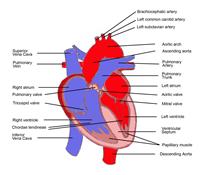
Home Studies Course to understand the heart, lungs and blood; and how these things affect health, fitness and overall wellbeing. This course may develop career and job opportunities for anyone working in:
- Fitness
- Life Coaching
- Allied Health
- Sports
- Medical support
This course covers: blood, blood pressure, pulmonary ventilation, gas exchange & transport, blood flow and gas transport, cardiorespiratory control, cardiorespiratory disease and more.
Prerequisite: Human Anatomy & Physiology BSC101 or equivalent.